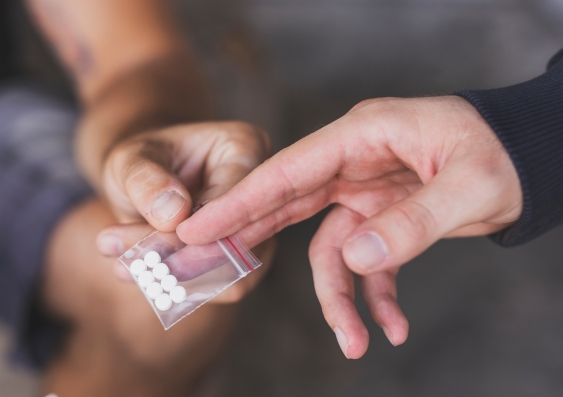Disruption to Australian ecstasy market following COVID-19 restrictions, report finds
The latest Drug Trends report from UNSW’s National Drug and Alcohol Research Centre shows significant changes in perceived availability of all forms of ecstasy.
The latest Drug Trends report from UNSW’s National Drug and Alcohol Research Centre shows significant changes in perceived availability of all forms of ecstasy.

The Drug Trends program at the National Drug and Alcohol Research Centre (NDARC), UNSW Sydney, has found evidence of ongoing disruption to Australian ecstasy markets since COVID-19 and associated restrictions.
Key findings from the 2022 Ecstasy and Related Drugs Reporting System (EDRS) interviews with people who regularly use ecstasy and other illicit stimulants highlight significant changes in the perceived availability of all forms of ecstasy. More participants have nominated availability as ‘difficult’ or ‘very difficult’ relative to 2021 and prior.
“We also found some indications that the price of ecstasy has increased since the onset of the COVID-19 pandemic and associated restrictions, and that perceived purity has decreased,” said Dr Rachel Sutherland, Deputy Program Lead of Drug Trends at NDARC and Post-Doctoral Fellow at UNSW Medicine & Health.
Reported frequency of ecstasy use has also been lower in the past two years than before the pandemic.
“The frequency of ecstasy use has almost halved compared to 2020 and prior,” Dr Sutherland said.
“This reduction in ecstasy use is likely a consequence of disruptions to the ecstasy market, and of reduced opportunities to attend events where ecstasy may typically be used since the onset of the pandemic.
“While this may seem like a positive outcome, it is possible that major disruptions to the ecstasy market could result in some people using other substances which may have greater risk of harm.”
The price of cocaine has also increased since the onset of the pandemic and is now a median of $350 for a gram.
However, reports of perceived availability of cocaine continue to be strong since the onset of the pandemic, which aligns with suggestions of increased supply and demand globally.
Read more: Five drug-induced deaths per day among Australians in 2020, report finds
“These findings reinforce the need for people who use cocaine to have access to advice on how to reduce the risk of overdose, injuries and other harms,” said Associate Professor Amy Peacock, Deputy Director of NDARC and Program Lead of Drug Trends.
“They also highlight the importance of ongoing monitoring to track changes in Australian drug markets and the use of ecstasy and other illicit stimulants.
“The EDRS is key to identifying these trends and provides evidence of emerging issues that warrant further examination.”
The 2022 national EDRS and Illicit Drug Reporting System (IDRS) reports have been released today at the 2022 NDARC Annual Research Symposium.
EDRS interviews are conducted annually with a sentinel sample of people who regularly use ecstasy and other illicit stimulants, recruited from all capital cities of Australia. There were 700 participants in 2022.
Illicit Drug Reporting System (IDRS) interviews are conducted annually with a sentinel sample of people who regularly inject drugs recruited from all capital cities of Australia. There were 879 participants in 2022.
The Drug Trends program is coordinated by NDARC at UNSW Sydney and collaborators across Australia. It is undertaken in partnership with researchers from National Drug Research Institute, Curtin University; Burnet Institute; School of Psychology, University of Tasmania; Institute for Social Science Research, University of Queensland; and Northern Territory Health.
The Drug Trends program has been coordinated by NDARC since 1996 with funding from the Australian Government Department of Health and Aged Care.
Free and confidential advice about alcohol and other drugs is available 24/7 by calling the National Alcohol and Other Drug Hotline on 1800 250 015 or Family Drug Support on 1300 368 186.